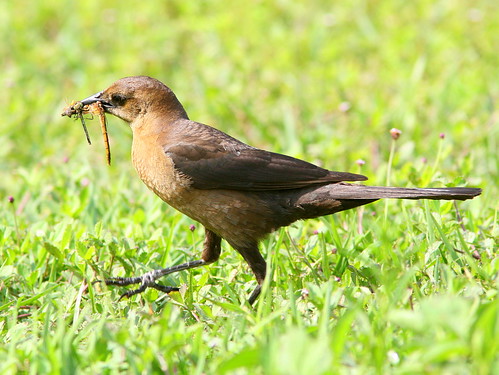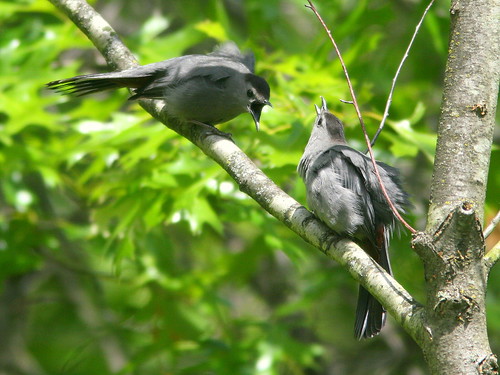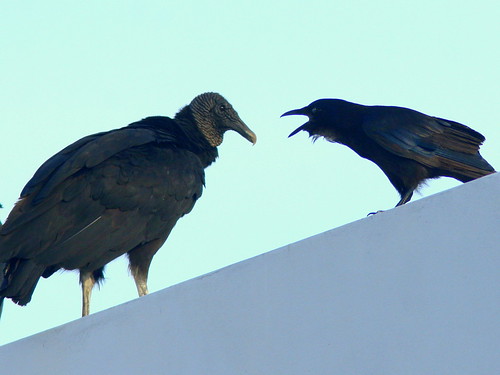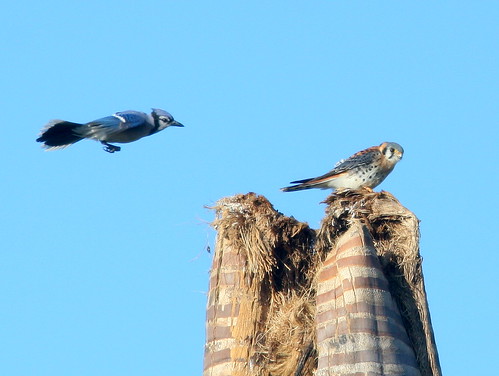Posted by: Ken @ 2:42 pm
Even the most casual observer knows that birds are not always nice to each other.Territorial disputes are common, between birds of the same or different species. In our Florida neighborhood, mockingbirds seem to defend an invisible property line and face off on either side of it. Blue Jays and Northern Mockingbirds chase each other through the trees, the way I used to see jays and robins fight over domination of our back yard cherry tree in New Jersey.
One might ask, why don’t birds just get along and not waste energy fighting with one another? In nature, behaviors usually carry some survival value which may not always be readily apparent. Of course, defense of nesting and feeding territory is a most basic form of “Homeland Security.”
Disputes between birds usually do not result in physical violence. Often, an aggressive gesture or a hostile verbal exchange is enough to settle a dispute, at least for the moment.
These two male Boat-tailed Grackles (no this is not an exotic “Three-legged Frogmouth”) are vying for control over the same nesting harem, centered around a medium-sized palm tree in our yard. Click on the photo to see ritualistic sequences in their non-violent “dance competition,” after which the loser simply flies away :
A markedly dissimilar female Boat-tail grasps a dragonfly to feed to her young and seems to pay no attention to the epic contest:
Birds cannot frown, but posture can convey hostile intent. Are these Gray Catbirds having a domestic disagreement?
Ironically, survival of a species may require fights to the death of some nest-mates. When food is scarce, parents may not be able to feed an entire brood. In this case the youngster that competes best for nourishment may benefit when the weaker dies of starvation. With birds whose eggs hatch asynchronously, such as the Bald Eagle, the older and stronger chick has the advantage. The season before last, our local pair of eagles hatched out two eggs. The older eaglet, a female that was named “Hope” in a national poll, always managed to be fed first, and her little brother “Justice” waited patiently for his share. Since there was an abundance of food, both thrived and successfully fledged.
Here, Hope (on the right) sits on the food and threatens her little brother as he attempts to take some for himself: 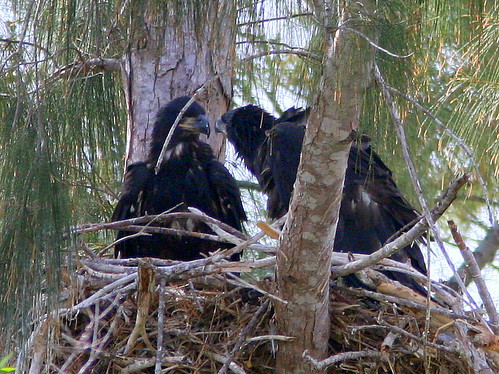
Responding to the threat, Justice backs off and assumes a passive position, nearly on his back: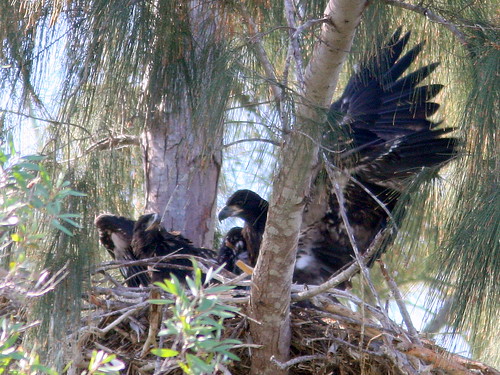
A majestic eagle, tending a nest near our Illinois home, is pestered by a lowly Red-winged Blackbird:
I captured this bold attack by a Common Grackle, on one of two Red-tailed Hawks as they sat peacefully on an Illinois neighbor’s roof:
Another attack that I witnessed involved a Wood Stork with a prey item in its bill as it unwisely approached a Great Blue Heron’s position at the far edge of our Florida lake. The heron charged it, but the stork held fast to its booty.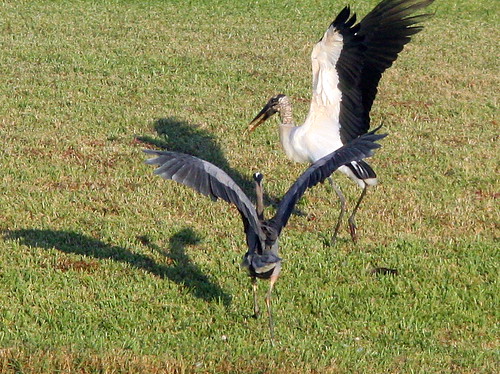
Atop a telephone pole in the wild area near our Florida home, a Loggerhead Shrike and then this Northern Mockingbird took turns flying at a Fish Crow: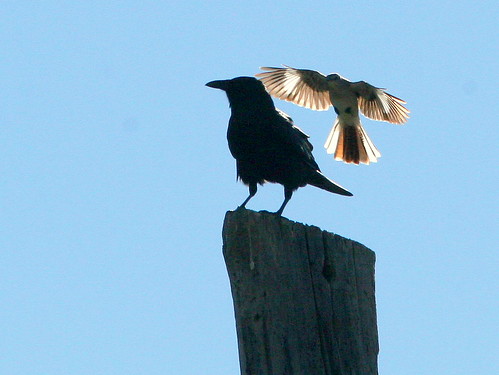
Here, it was the Fish Crow’s opportunity to harass a Black Vulture as it roosted on the handball court at a local Florida soccer park:
A pair of (Yellow-shafted) Northern Flickers “owned” the broken-off top of a tall Royal Palm, that is…
…until a male American Kestrel migrated down to Florida and decided to evict the flicker: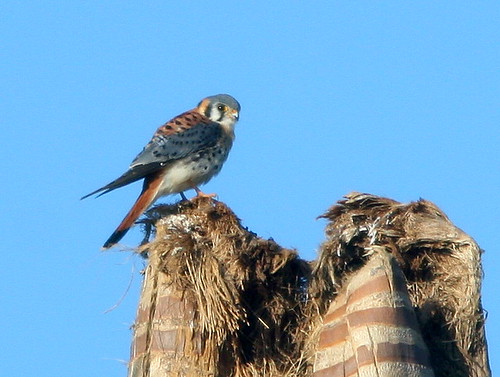
A few days ago, I watched as a drama played out, when a Blue Jay began scolding the raptor from a nearby tree.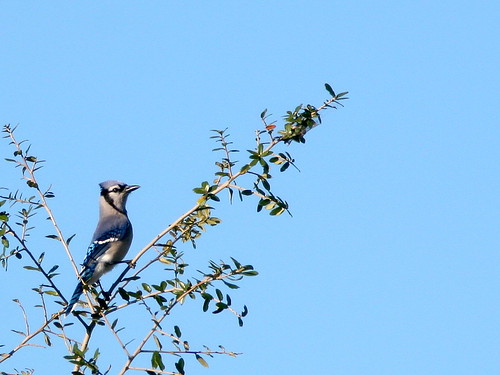
Before the encounter, the kestrel appeared to be minding his own business, but the Blue Jay moved up to attack: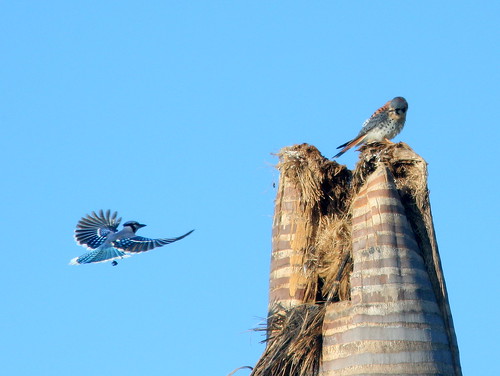
At first, the kestrel held his ground and seemed to ignore the jay’s taunts:
The jay never touched the kestrel, but it swooped very near: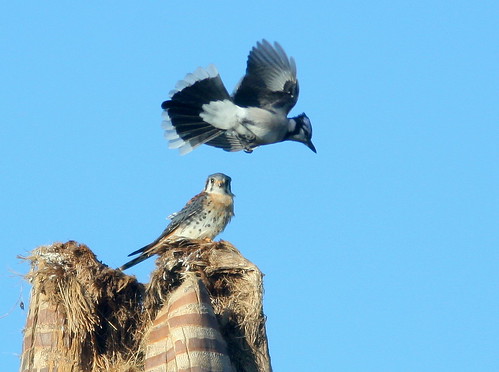
Succumbing to the relentless attack, the kestrel flew off and roosted about 100 yards down the road, but the jay persisted, and both flew away out of view: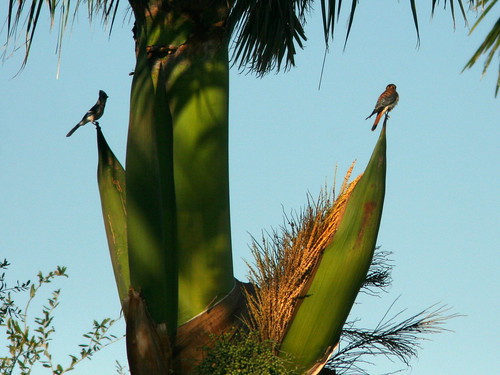
A couple of hours later, on my way back out the road, I was surprised to find that the kestrel had returned to his original perch, high on the palm stump:
Now with no jay around to bother him, the kestrel flew down, caught a Halloween Pennant dragonfly, and ate it in peace:
The kestrel then stretched his left wing and fanned his tail. For me it was an unprecedented display of his beautiful plumage:













